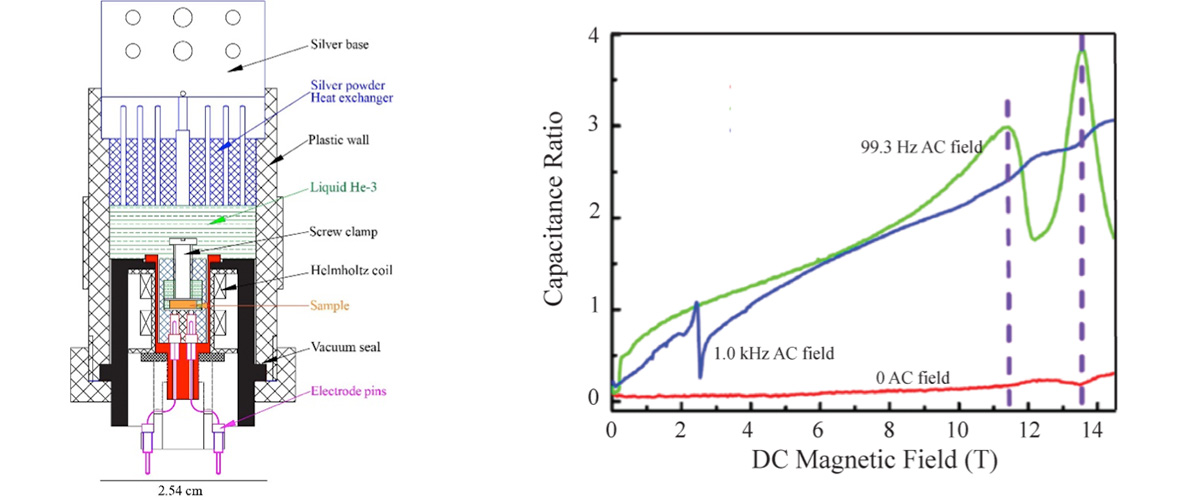What did researchers discover?
A collaboration between the MagLab and SuperPower, Inc. tested one of SuperPower's modern high-temperature superconducting tapes in the MagLab's world-record DC magnet, the 45T hybrid magnet. The researchers measured the ability of the tape to carry superconducting electrical current even in these high magnetic fields, finding the "critical current density," Jc, to be well over 1 million amps per square centimeter when the magnetic field is perpendicular to the tape, and over 7 million when the magnetic field is in the plane of the tape (the “parallel field” orientation).
Why is this important?
These critical current densities are exceptionally high and allow for the conceptual design of magnets that will reach 50T and beyond.
Who did the research?
D. Abraimov1, J. Jaroszynski1, Y. Zhang2, A. Francis1, A. Constantinescu1, Y. L. Viouchkov1, and D. C. Larbalestier1
1National MagLab, Florida State University; 2SuperPower Inc.
Why did this research need the MagLab?
The MagLab is the only lab that can provide 45T DC magnetic fields.
Details for scientists
- View or download the expert-level Science Highlight, Modern High-Temperature Superconducting tape found suitable for magnets up to 50 teslas and beyond
Funding
This research was funded by the following grants: G.S. Boebinger (NSF DMR-1157490, NSF DMR-1644779)
For more information, contact Lance Cooley.






